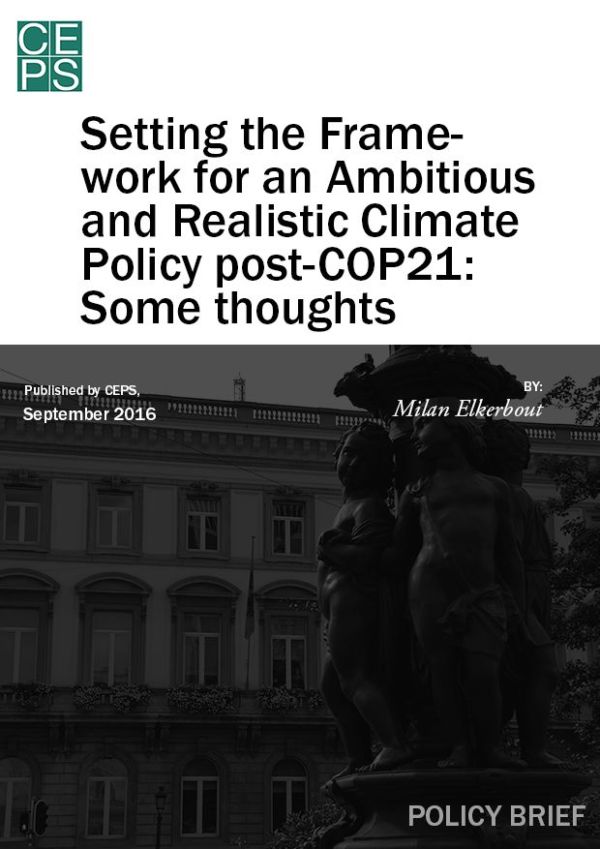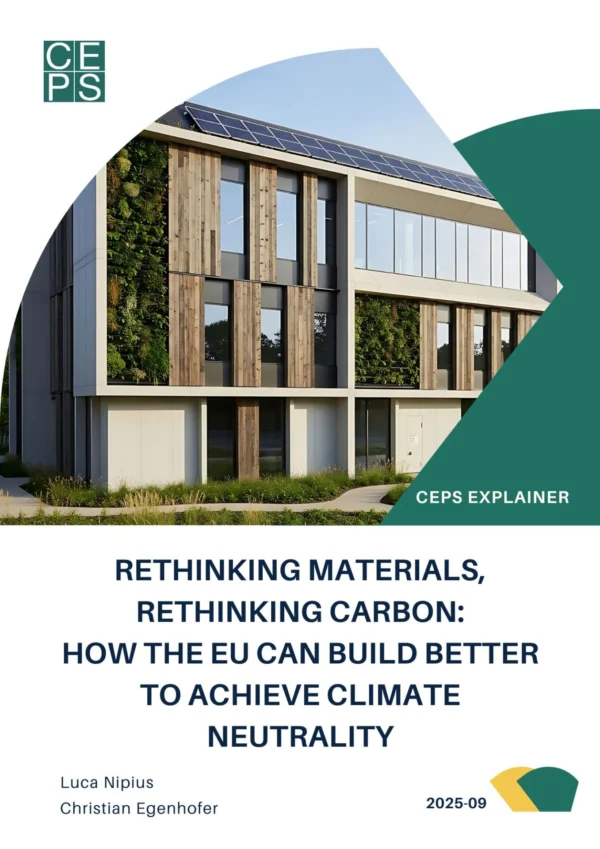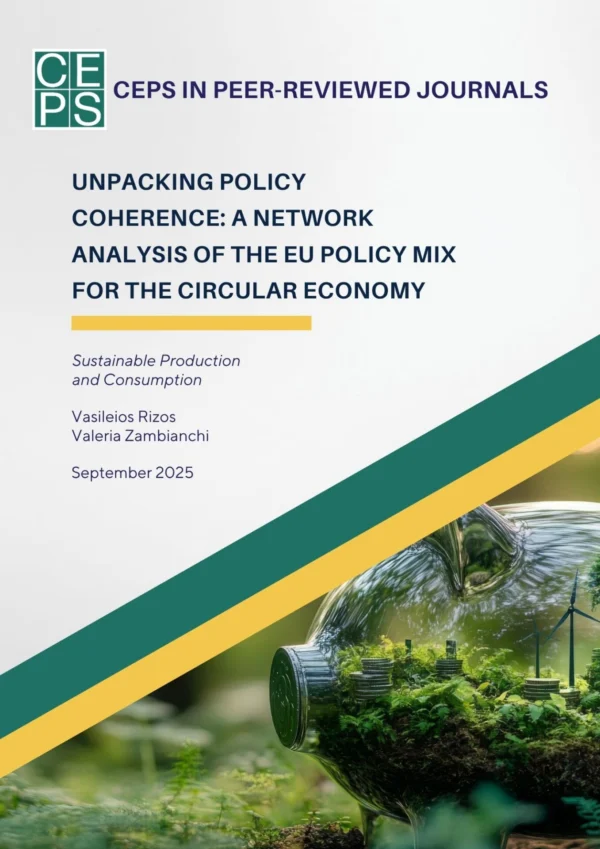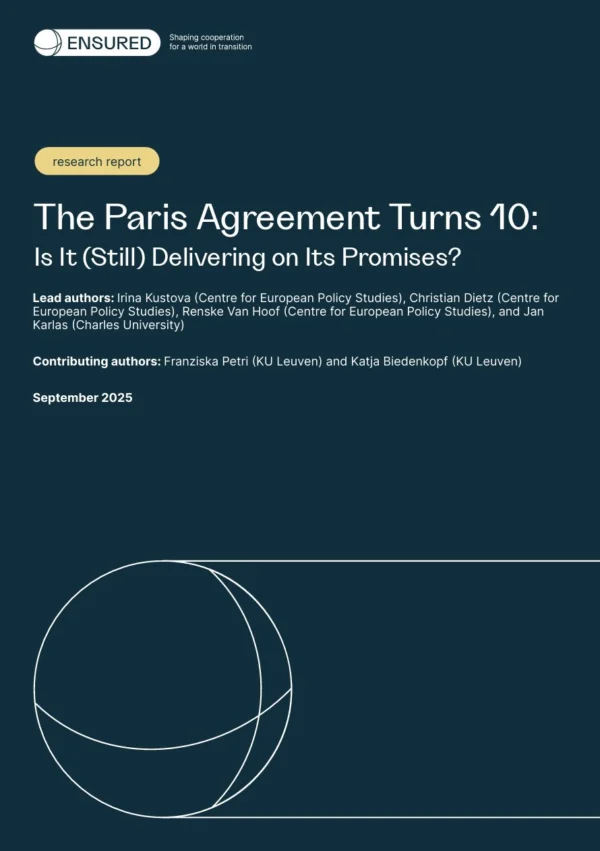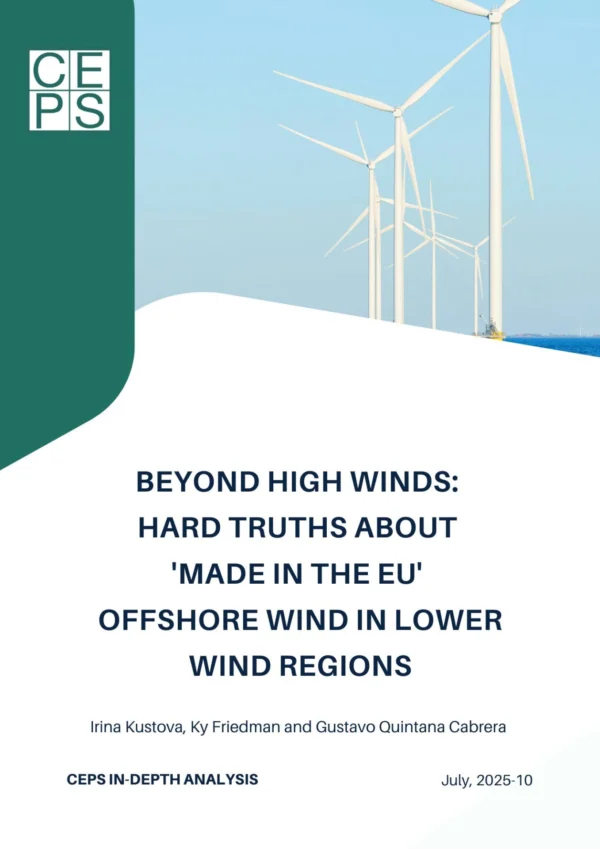Following the successful conclusion to COP21 with the adoption of the Paris Agreement in December 2015, the EU is faced with the question of what level of ambition it should aim for in setting its future climate policies. Do the European Council Conclusions of October 2014 preclude any adjustment in the level of ambition or is the EU able to adapt its goals to international developments?
The current EU climate goals were established ahead of Paris, i.e. by the October 2014 European Council Conclusions, which in turn built on earlier Commission communications and roadmaps. These goals served as the basis of the EU’s first commitment (called a Nationally Determined Contribution, or NDC) under the Paris Agreement. The European Council also set out in broad terms how this commitment would be achieved, based on the following three cornerstones:
- Greenhouse gas emissions reduction target of “at least 40%”, and separate reduction targets for the ETS (emissions trading system) and non-ETS sectors of 43% and 30%, respectively;
- EU-wide targets of 27% for both renewable energy and energy efficiency; and
- Specific parameters for the different policies, such as for the linear reduction factor (LRF) and allocation rules in the ETS, flexibility instruments for Effort Sharing, and the governance of renewable energy targets, although some are expressed more vaguely than others.
The EU and its member states are also currently in the process of ratifying the Paris Agreement. The US and China have already ratified this agreement. If other Parties follow suit before the EU does, and possibly also propose additional measures for implementing their commitments, the EU’s commitments may receive more scrutiny. Furthermore, once the Paris Agreement enters into force, more details regarding the review cycle will be worked out, which could draw further attention to the commitments undertaken so far.
The EU commitment (ambition)
From a purely legal perspective, the level of the EU’s ambition is an internal question, but it has important international political repercussions and will be a recurrent theme following COP21. The Paris Agreement establishes an iterative process of-five year ‘review cycles’, in which all Parties to the Agreement are encouraged to update their commitments in such a way as to “represent a progression beyond the Party’s then current nationally determined contribution and reflect its highest possible ambition”. If the EU wants to live up to its self-appointed role of acting as a global leader in the area of climate policy, pressures to raise its level of ambition will gradually increase, and EU climate policy governance should be equipped to regularly address this topic.
At the present time, there seems little likelihood that the European Council or the European Commission will (re)-launch a debate on a higher GHG reduction target. Both the European Council (in March of this year) and the European Commission have stated that the goals expressed in the 2030 Framework and the October 2014 Council Conclusions represent the EU’s first contribution to the Paris Agreement. Neither is likely to return to this topic until there is further impetus through the United Nations processes, examples of which are enumerated in the box below.

For now, this leaves the question of (higher) ambition to the co-decision processes in implementing the 2030 Framework for climate and energy policy. With the availability of qualified majority voting in specific areas of action, making progress through legislation could be more feasible than trying to achieve renewed consensus on higher levels of overall ambition in the European Council. Such measures include the upcoming renewable energy Directive, the integration of LULUCF (land use, land-use change and forestry) in the 2030 Framework, the EU ETS and the reduction of its cap, and Effort Sharing in non-ETS sectors and the flexibility available to member states. Such policies should, in any case, contain elements or provisions that clearly relate to ambition.
Ambition in the EU ETS
Increasing the ambition in the EU ETS can be done more gradually by adjusting the cap, which has a greater impact in the long-term or, alternatively (and perhaps more controversially), the annual supply can be adjusted which has a short-term impact. Long-term ambition in the EU ETS is primarily expressed through the EU-wide cap on allowances. This cap is currently reduced annually at a linear factor of 1.74%, representing 38 million tonnes of CO2e; the proposal is to increase this to 2.2%, or 48 million tonnes, from 2021 onwards.
One can argue that the impact of changing the linear reduction factor (LRF) will be felt more in the long term, than in the short term. The surplus of allowances in the ETS of around 2 billion tonnes serves as a cushion against a significant short-term change to the supply-demand balance, as minor adjustments to the linear reduction factor only result in a difference of a few million tonnes per year. Nevertheless, this small difference adds up over the years, with the result that the cap would reach zero in different years, depending on the LRF applied. With a LRF of 2.2%, the cap will reach zero by 2058, rather than by 2068 compared to the current 1.74%. The LRF thus represents the moment when the ETS sectors are expected to be fully decarbonised.
Conversely, short-term impact could be achieved by adjusting the annual supply. While various reforms have been passed or proposed that address the causes of the supply-demand imbalance, its consequences (the surplus) will only be slowly addressed through the Market Stability Reserve (MSR) from 2019 onwards. If a number of allowances are cancelled, or if more are withheld from auction, as was done with ‘backloading’, the reduced supply would create upward pressure on allowance prices, but the effect might still be neutral in the long-run if allowances are only withheld from auction, as they are slated to be returned to the market at some point in the future.
Supply in the ETS is not the only element that might be used to address the ambition of the policy. The Innovation Fund could play a role in supporting the development of new low-carbon technologies. At current EUA (European Emission Allowances) prices (around €4/tonne), however, the Fund of 450 million allowances would amount to less than €2 billion over the 10 years of ETS Phase 4. Since the Innovation Fund is generated by pooling and auctioning allowances, the efficacy of the Fund is inextricably linked to the EUA price. If the Fund is to have a more significant impact, a higher EUA price, or bigger fund is required. A weak carbon price affects the innovation fund’s importance, but an unstable long-term price signal also negatively affects the decision-making on the kind of interventions that it will finance.
Effort sharing and non-ETS sectors
The steeper reduction targets for ETS sectors suggest that the narrative of the EU ETS as the ‘cornerstone’ of EU climate policy should be put into context. Effort sharing in non-ETS sectors, in fact, already covers a larger share (55%) of EU greenhouse gas emissions – and this share will continue to grow as ETS sectors are asked to reduce emissions at a steeper pace.
Unlike the ETS, the effort sharing legislation does not contain obvious elements that can address ambition. The member states are assigned individual emissions reduction targets, while there are also some flexibility instruments available. As these targets are simply included in an Annex, they do not represent an element subject to decision-making by the co-legislators.
But consideration may be given to allowing Member States additional flexibility, in exchange for upping their ambitions. This would require the introduction of additional policy parameters linked to ambition. The flexibility instruments, in fact, could be construed in such a way that ambition might be influenced. While flexibility inside the non-ETS framework – via borrowing, banking and transferring parts of Annual Emissions Allocations (AEAs, the accounting unit in effort sharing) – may give member states more leeway and flexibility, in principle it leaves the ambition unchanged: the effort is only shifted to other years, or countries, but otherwise it remains the same for the period.
Outside the non-ETS framework, however, there is now a proposal from the Commission (following the European Council) to allow some member states to surrender a limited number of allowances from the ETS, in order to fulfil part of their effort sharing target. This represents an element in which, as a purely illustrative example, flexibility could be used to address ambition.
If a member state wants to use ETS allowances to fulfil part of its obligation under an effort sharing agreement, one suggestion is to require the country, beyond a certain level, to surrender more than one allowance (for example: 1.5, or 2 EUAs could be exchanged for a single AEA) for every tonne that it does not reduce in the non-ETS sectors. This would be akin to a ‘discount’ system, which would give member states extra headroom in non-ETS sectors in exchange for extra emissions reductions achieved elsewhere.
Milan Elkerbout is a Researcher at CEPS Energy Climate House. This Commentary was prepared as a background note for the EPP Public Hearing, “Climate Change – Treaty Change? Solutions for the EU post COP21” in the European Parliament, 28 September 2016.
CEPS Commentaries offer concise, policy-oriented insights into topical issues in European affairs. The views expressed are attributable only to the author in a personal capacity and not to any institution with which he is associated.
Available for free downloading from the CEPS (www.ceps.eu) and ECH websites (www.ceps-ech.eu)
© CEPS 2016
